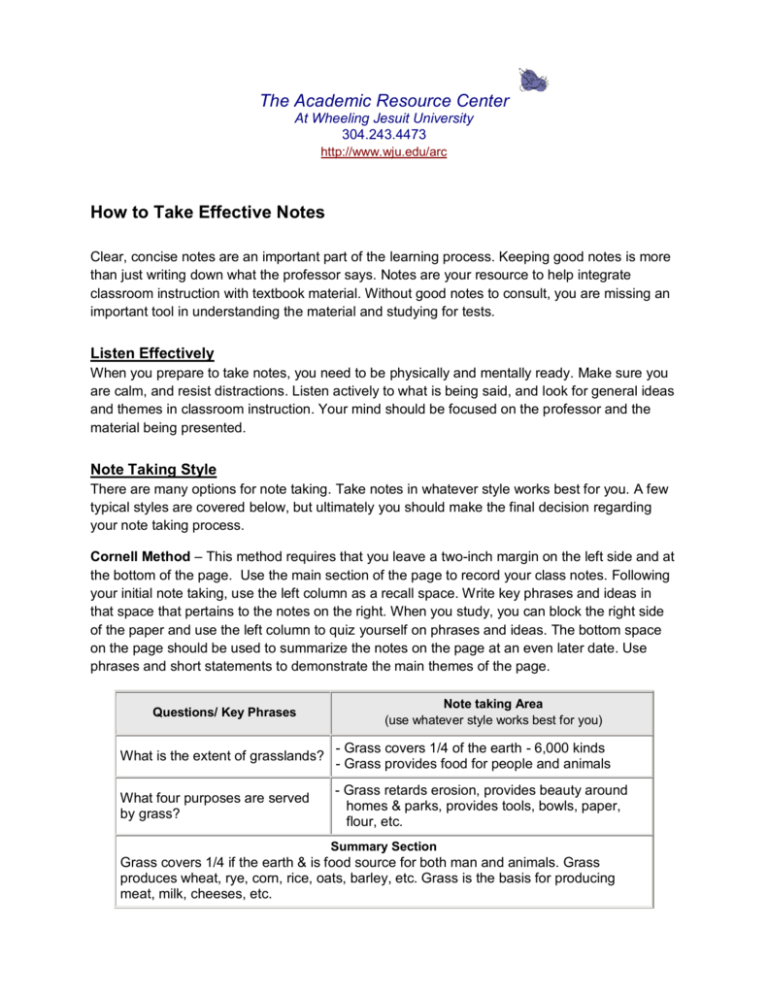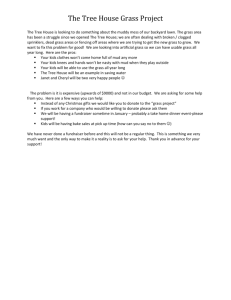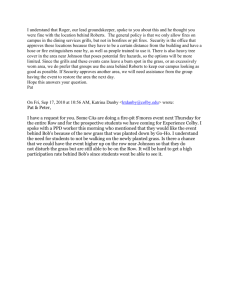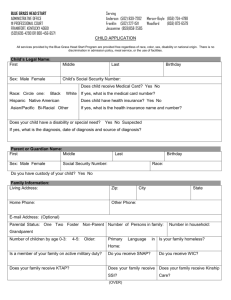Academic Resource Center - How to Take Effective Notes
advertisement

The Academic Resource Center At Wheeling Jesuit University 304.243.4473 http://www.wju.edu/arc How to Take Effective Notes Clear, concise notes are an important part of the learning process. Keeping good notes is more than just writing down what the professor says. Notes are your resource to help integrate classroom instruction with textbook material. Without good notes to consult, you are missing an important tool in understanding the material and studying for tests. Listen Effectively When you prepare to take notes, you need to be physically and mentally ready. Make sure you are calm, and resist distractions. Listen actively to what is being said, and look for general ideas and themes in classroom instruction. Your mind should be focused on the professor and the material being presented. Note Taking Style There are many options for note taking. Take notes in whatever style works best for you. A few typical styles are covered below, but ultimately you should make the final decision regarding your note taking process. Cornell Method – This method requires that you leave a two-inch margin on the left side and at the bottom of the page. Use the main section of the page to record your class notes. Following your initial note taking, use the left column as a recall space. Write key phrases and ideas in that space that pertains to the notes on the right. When you study, you can block the right side of the paper and use the left column to quiz yourself on phrases and ideas. The bottom space on the page should be used to summarize the notes on the page at an even later date. Use phrases and short statements to demonstrate the main themes of the page. Questions/ Key Phrases Note taking Area (use whatever style works best for you) What is the extent of grasslands? - Grass covers 1/4 of the earth - 6,000 kinds - Grass provides food for people and animals What four purposes are served by grass? - Grass retards erosion, provides beauty around homes & parks, provides tools, bowls, paper, flour, etc. Summary Section Grass covers 1/4 if the earth & is food source for both man and animals. Grass produces wheat, rye, corn, rice, oats, barley, etc. Grass is the basis for producing meat, milk, cheeses, etc. Outline Method – Although effective and orderly, outlining may be too difficult for some students to use during classroom instruction. Some students choose a modified outline method. This method maintains the outline structure without the numbering system. Begin with main topics on the far left side of the paper. Indent sub-topics under the appropriate main topic and details under the sub-topics. This method of note taking is often used because the structure makes studying easy. Standard Outline I. Main Idea A. Subtopic 1. Detail 2. Detail B. Subtopic 1. Detail 2. Detail Modified Outline Functions and attributes of grass - Grass covers ¼ of the earth -food for people and animals -retards erosion - Grass into meat -cattle, sheep, goats, etc. -dairy cows = milk, cheese Mind Mapping Method – Mapping is often helpful for visual learners. This style of note taking allows you to visualize and remember a diagram of the links among concepts. Start with the main topic in a large circle in the middle of your paper. From the main topic, draw lines connecting sub-topics in smaller circles. Continue this process with details or other necessary information. Regardless of what method you use, there are a few things to remember. Make note of what is written on the board; that typically means it’s important. Record information from classroom instruction in your own words. Adopt a system of abbreviations and symbols that works for you. Listen for verbal cues given by the professor such as “this is important,” or “in summary.” What to do With Your Notes Review your notes as soon as possible after class. If necessary, rewrite sections that are unclear while the information is fresh in your mind. This is also a good time to identify major themes that you may have missed during classroom instruction. Review your notes as often as possible, especially before and after class. Reviewing your notes will help you see relationships, themes, and continuity in your courses.








